Data-Driven Content Strategy: How to Use Data to Write Effective Website Content
Effective content is content that helps your audience accomplish their goals and helps your business accomplish its business goals.
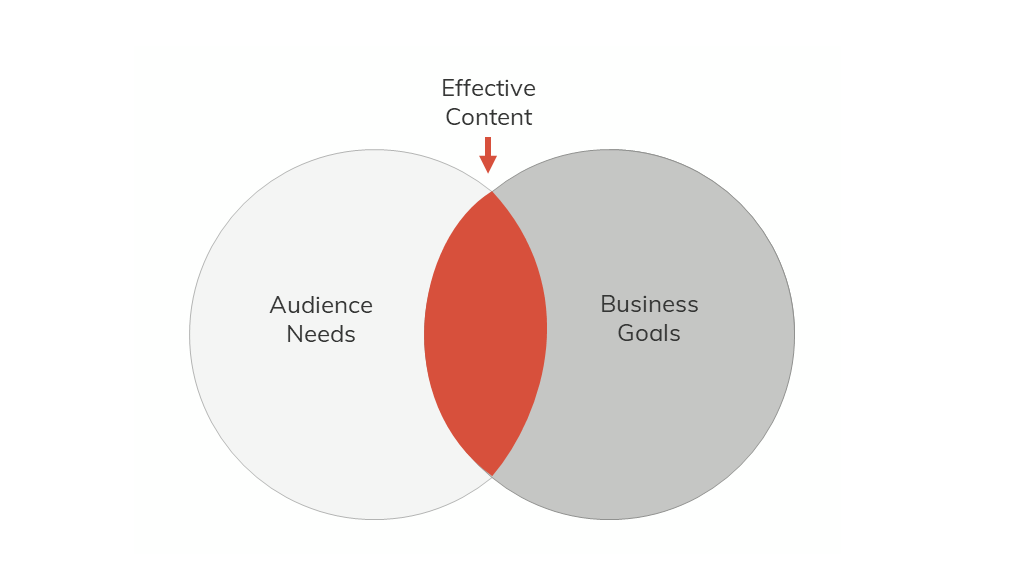
Effective content helps solve these problems:
- No one can find anything on our website.
- Our visitors don’t donate, sign up for email, or [insert any other conversion metric here].
- Our visitors don’t know what we do or how we do it.
- Our competitors rank better on our topics.
Is your content effective? Check the data.
Conducting a content inventory and audit is the best way to tell if your content is effective. A content audit evaluates your content using data such as:
- pageviews
- entrances
- conversions
- goal assists
- readability scores
- word counts
- SEO backlinks
Data tells you if:
- Anyone is reading your content
- Your content is helping to achieve your business goals.
For your content audit to be successful, you need to be tracking meaningful goals and KPIs.
We have evaluated content with our content audits on dozens of websites and see the same problems again and again. Here are some of the top issues we see in content audits:
- A few pages get the majority of the traffic (page views)
- Most pages do not help achieve goals
- Organic search visitors do not convert
No beating around the bush: Creating effective content is hard.
Effective content has been redefined.
How humans behave and consume content online has changed in the past 15 years. These changes have altered what effective content looks like.
Content on the Internet increased.
The amount of content on the internet increases by 3,000% annually.
Google searched 130 trillion web pages in 2016.
Competition for eyeballs is fierce. People are more sophisticated, discerning consumers of content. You have about 10 seconds to persuade people to stay on your website. People are judging your website’s design even faster to determine if it looks credible and matches their mental model.
We started using smartphones.
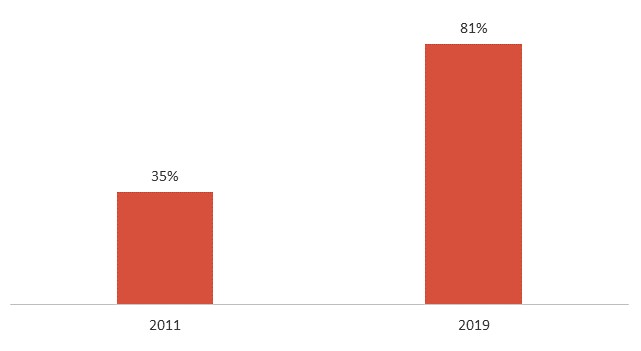
(Source: Pew Research Center – Mobile Fack Sheet
Smartphones have changed scrolling behavior. The fold is unimportant as long as your webpage has good information scent. Good information scent helps you quickly look at the page and understand what the page is about and where you will find the information you are looking for. Creating scannable content is essential to creating information scent.
Internet speeds increased, and broadband became more accessible.
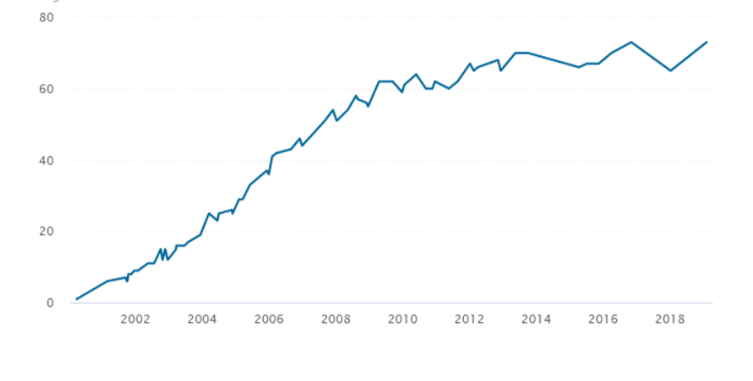
(Source: Pew Research Center – Internet/Broadband Fact Sheet.
Pages load faster now. We can put more content and visuals on a page.
Content strategy has changed.
These changes have altered content strategy.
In the past, the most important thing about your digital strategy was to publish new content frequently. We told you to publish new content 2-3 times a week. Everyone published short blog posts that were 300-500 words. That strategy does not work anymore.
Now, there is SO much content on the internet. It’s not enough to post new content. You need to post the BEST content.
What makes good website content?
The best content provides a complete answer to a user’s query on a single page. This also means that it satisfies website visitors who arrive on a page regardless of how they got there, i.e., from navigation, an email, or a referral link on another website.
Google spends billions of dollars a year researching and testing what content people want based on their search terms and search intent. We can use Google’s search position as a proxy for user satisfaction.
People want long-form, holistic content.
As we mentioned, people are comfortable scrolling, and pages load faster. People have also become more sophisticated consumers of content with the proliferation of content over the past 20 years.
Here’s an analysis SERPIQ did on the length of content that ranks well in Google. All pages that rank on the first page of Google Search results have more than 2,000 words.
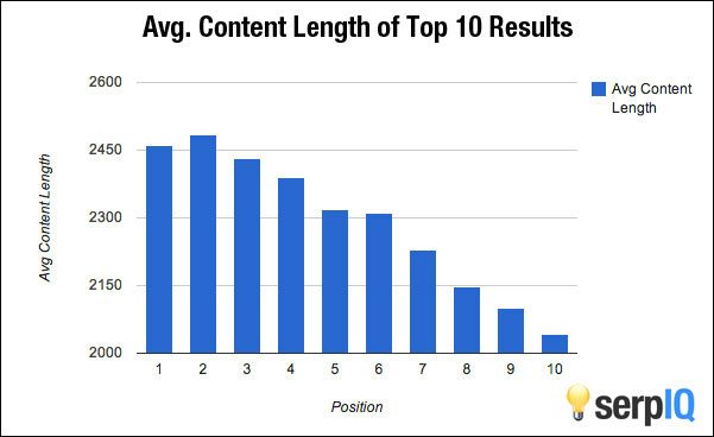
We are not saying you should ramble on for 2,000 words. Instead, this data shows users want holistic, long-form content that thoroughly answers their questions on a topic.
Connective tissue content
Most clients have content that explains their vision and mission. Typically, this content is borrowed from strategic plans and annual reports written for people familiar with your organization (like your president, board, and major donors).
However, most people coming to your website have never been to your website before. Check Google Analytics and look at your new vs returning visitors. Typically, more than 75% of visitors are new.
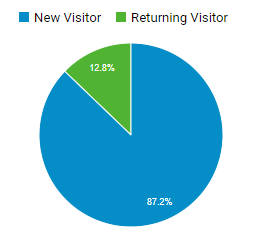
Your vision and mission content are likely not comprehensive enough for people who are new visitors and don’t know much (if anything) about your organization.
Note: This is normal! The Curse of Knowledge is a cognitive bias where we unknowingly assume that our target audience has the same interests and understanding as we do. It’s hard to forget what you already know.
For nonprofits, the key content you need to make your website more effective is content that connects the dots between who you are, what you do, how you do it, and your impact.
We refer to this content as connective tissue, topical hub, or pillar content. It’s like the tendons and ligaments in your body that hold your bones together and your muscles to your bones. Your body can’t function without this connective tissue, and many websites are:
- Missing this content
- Have poorly written content (i.e., uses jargon that the uninitiated don’t understand)
- Have too much content spread between too many pages, making it difficult to find answers.
This connective tissue content serves two purposes:
- It can link to deep content pages that already get traffic but currently do not get people to convert (donate, join, or sign up for email).
- It has the potential to rank in search engines for higher volume, top-of-funnel keywords that can drive substantial traffic to your website.
Most clients need somewhere between three and ten pages of this connective tissue content.
How to create more effective content? Use data!
So, what’s the secret to improving content performance? Use data and invest some time into creating and editing content.
Data can help you:
- Find out what content your audience really wants (not just what you, your boss, or your most vocal members think they want).
- Write effective, holistic, connective tissue content.
- Use the language of your audience.
- Make your content more findable.
Find out what your audience really wants.
If you have not done so already, identify your priority audiences. Think about what problems they are trying to solve and what questions or tasks they need help with. Next, do some user research.
SEO keyword research is cheap and is a fast form of user research. We like to use this data with other complementary data like a User Task and Satisfaction Survey (also pretty cheap and fast research).
Do keyword research on key terms related to the task your audience is trying to complete. You’ll want to:
- Explore related terms
- See if there is any search volume (Is anyone looking for this information?)
You should also see what search results appear in Google search for key terms. Look at who is ranking better than you on keywords and what their content does that is better than yours. And, look at related searches (“People also ask.”)
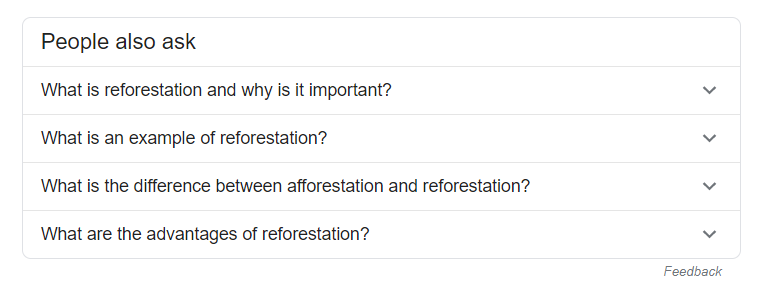
Write effective, holistic, connective tissue content.
We adapted the Core Content model as taught by Carrie Hane. We paired this model with SEO research and UX writing tactics to help organizations create better content.
Our adapted Core Content Model helps us create an outline of content that
- Meets both your user’s goals and your business goals
- Answers the who, what, where, when, how, and why of the topic.
We wish that every client had the budget to pay us to help write every piece of content on a website. However, that is not realistic. So, we have developed a workshop to teach the process of researching, outlining, and writing content.
We teach you how to use SEO data, Google Search Console, Moz, SEMRush, or free tools like UberSuggest to learn how users think about and describe your topic. We show you how to do competitive research to rank better than your competitors in search.
Finally, we teach you UX writing tactics to make your content more scannable and improve the information scent to help your website visitors find what they are looking for.
Want help writing effective content? Get in touch and we can help you.
Use the language of your audience.
If you write a piece of content and no one reads it, does it matter? Using the language of your audience is critical to get people to find your content. If your audience is the general public, you can use SEO keyword research to find the words your audience uses. If your audience is more specialized or you are a B2B company, you can sometimes use careful analysis of SEO keyword data, but you should also talk to your audience to learn what terms they use (through user interviews or surveys).
One issue we frequently see is pages or microsites with branded campaign terms or unclear page titles. For example, American Forests used the term “Community ReLeaf ” to describe their urban forestry work. However, no one was searching for content on “Community ReLeaf.” We worked with American Forests to reposition this page.
- So people interested in their work on urban forestry could find it
- To better explain the impact of the urban forestry work they are doing
- To show how they accomplish this work
- To show how this work accomplishes its organizational goals.
Make your content more findable.
We frequently hear, “No one can find anything on our website.” A variety of problems can cause this. The most likely issue is that your site has redundant, trivial, and out-of-date content.
The solution is to do a content audit to identify content that needs to be deleted, consolidated, or updated.
Want to learn more?
Watch a recording of our webinar, How to Use Data to Drive Your Content Strategy & SEO, or download the slides to learn our full process.
Want help making your website more effective?
If you are interested in turbocharging your content, get in touch, and we can help you.